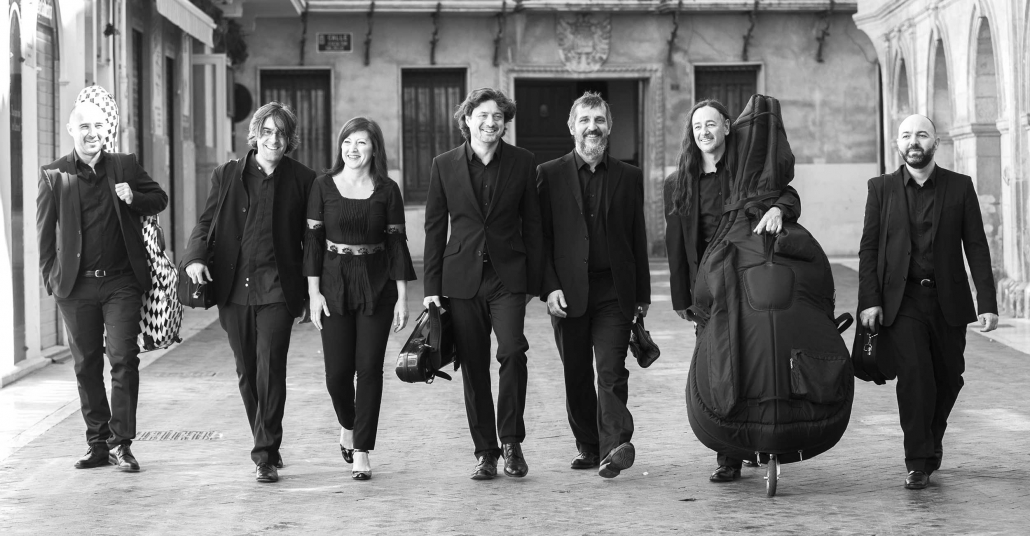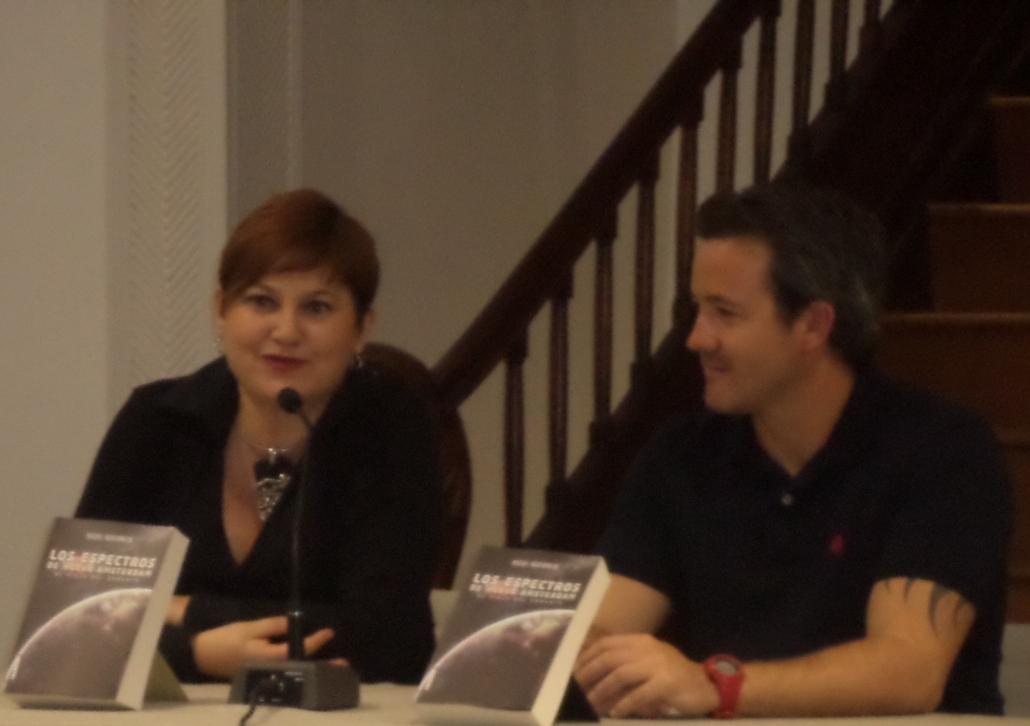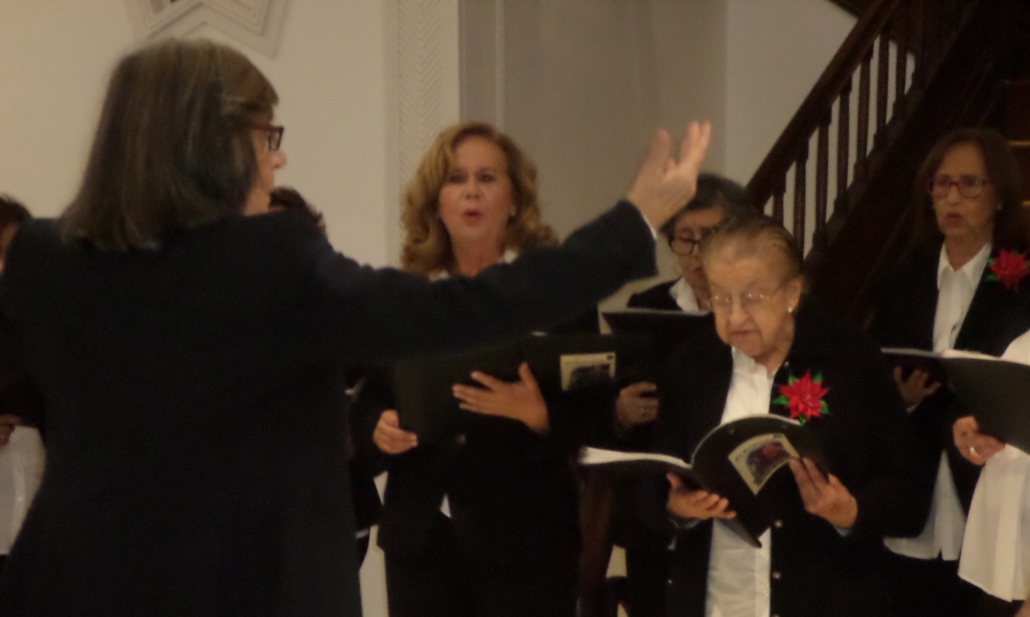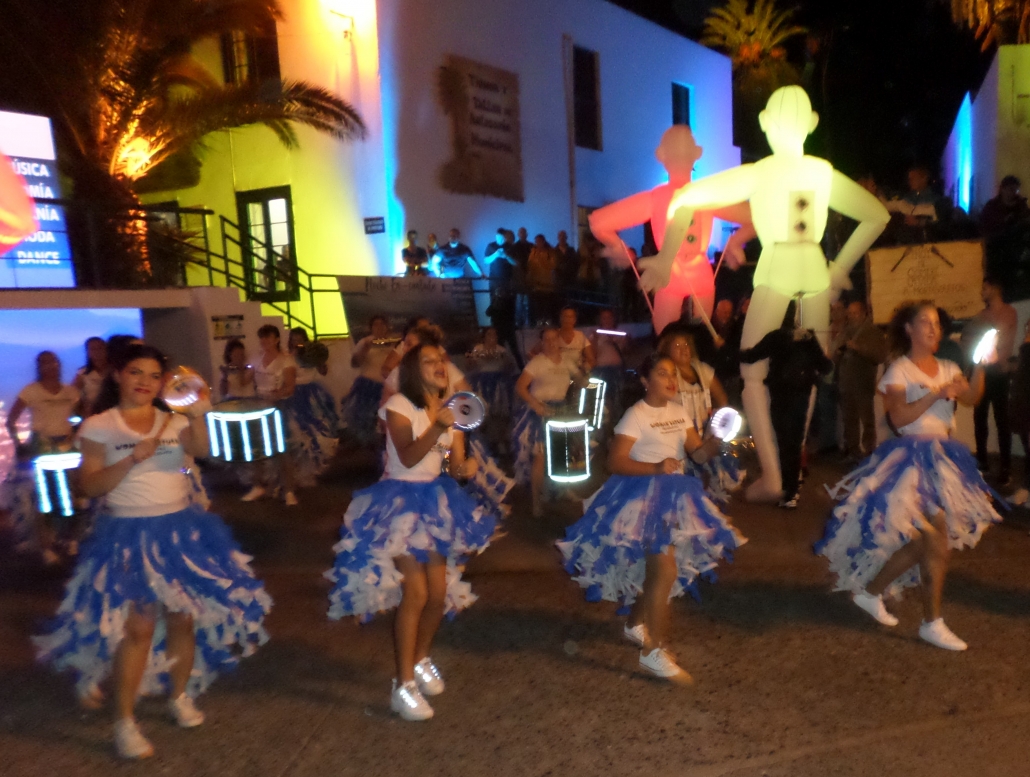NEWS, PREVIEWS, INTERVIEWS AND REVIEWS
GOSPEL, PERCUSSION, CLASSICAL, CHORAL AND STARRY SKIES
Latonius & The Faith Theory in Arrecife
La Tempestad in Arrecife
Mijail Saprychev, classical pianist at El Grifo
Miguel Aguearralde, book launch, in Arrecife
The Alborada Ladies Choir
Vocal Siete + support in Haria
What made Milwaukee famous will not be lost on Rod Stewart fans but the area now has a further claim to fame as the birthplace of another major artist who was then raised in Los Angeles. Both his parents were singers so Latonius enjoyed a musical childhood and adolescence. From an early age, jazz, pop, R&B, gospel and classical music were a constant soundtrack of his life. These styles have influenced his entire career, in which he has had the opportunity to share the stage with several other legends of gospel music as well as with major mainstream stars like Sarah Vaughan and Al Jarreau.
After living for a long period in Hamburg and touring Europe for several years, Latonius settled on the island of Tenerife in 2015. He then formed and launched the choir, Latonius & The Praise Theory. From its stage debut the outfit immediately captured the attention of the public with a combination of strength, expressiveness and vulnerability, showing the full spectrum of human emotions through the exceptional voice of Latonius, supported by his powerful personality.
´Its cool to sit at the piano and create a song nobody has ever heard before,´ Latonius tells us. ´My goal as an artist is, and always has always been, to make people feel music, because music triggers emotion. Whether I´m teaching a music workshop or singing in front of thousands of people, I believe my music and my voice is healing for the mind and soul of all people willing to listen.´
The artist born Tony Jermaine Earl in 1981 released his debut album, Say Yes, in 2013 and five years later he released another album, Home, on his own label.
Armed with this information we should not have been surprised by the soul and dexterity of this concert, with its constantly shifting moods of reverence and joyfulness.
We actually arrived a little late due to US Yaiza having changed the kick off time of their home match earlier in the day. Having seen, for the umpteenth time on this season ticket, Yaiza lose to a last minute goal and this time slip into the relegation zone as well, I was certainly in need of a restoration of faith by the time we crept into the back row of the theatre half way through the first number.
Even from that distance, though, we could see the tall, well built, powerful figure that is Latonius, surround by a seven-strong vocal choir and four musicians in a back line featuring keyboards, percussion, guitar and bass guitar. At the close of the first number he told us all that ´gospel is a life-style´ and he then went on to demonstrate to an audience that seemed already to be believers that gospel is also a state of heart and mind.

upholds The Faith Theory
Titles like Victory Belongs To Jesus were delivered as a constant source of celebration and reassurance, but it was the occasional musical sidetracks and detours that made this journey so rewarding. Latonius described the version of Silent Night that he and The Praise Theory delivered as being touched by Jamaica, and whilst the carol was still sung reverently it had that same loose, joyous feel as Rodney Crowell´s Voila, An American Dream. The harmonies in this lovely reggae-tinged rendition were beautiful.
Latonius sometimes offered introductions and comments in a slow paced Spanish that drew great support from his audience. It was in the island language that he thanked The Cabildo for enabling him to spend Christmas here on Lanzarote, and he then performed All Of You, written by Trey McLaughlin,
His colleagues were a truly international musical collage, including natives of Germany, France, Venezuela, Spain, America and the UK. Together they supported him on a sumptuous, rich version of Mary Did You Know.
This was a song that demanded attention, as did their Christmas medley of famous and lesser known carols, gorgeously assembled and packaged and delivered. However, there were other numbers in which Latonius drew the audience to their feet, to sway, spin and swivel and generally let loose with clapping hands, waving arms and hallelujahs. Sanador, meaning Healer, is a song off his current album, The Vision, and sounded like an age-old spiritual song and the absolute highlight of the evening was another of his own material, also off this album. I Surrender is an absolutely contemporary pop song with a lyric that is about religious devotion that would also serve as romantic ballad. It felt so instantly familiar to me that I must have heard it, or a version or adaptation of it, on radio or in bars somewhere.
The audience similarly surrendered themselves completely to Latonius and The Praise Theory, who returned to the stage after their ´final number´ in response to calls for more from the entire audience. The closing encore song saw them leaving the stage, in single file via the front apron, and down the steps and up the centre aisle and out through the back exit into the foyer. It was there that we found not only Latonius signing cds, posing for photographs and generally seeming to be an all-round good guy, but also there were his entire musical crew, smiling and chatting to fans.
This gospel show had certainly restored my faith in the goodness of human nature.

A day or two later, we were in Arrecife to hear an outfit called La Tempestad. This was an ensemble created at the turn of this century to play ancient music. Formed by the musicians Gullermo Peñalver (on traverso), Pablo Suárez and Pablo Prieto (who play violins), Antonio Clares (with a viola), Guillermo Turina (on cello), Jorge Muñoz (bass) and Silvia Márquez (fortepiano and artistic direction), La Tempestad is now considered by critics to be one of the leading exponents in Spain in the field of interpretation of historical music. The group´s concerts invariably catch the listener from the first note and then hold the attention through the precision, finesse and blending of interpretations. They have recorded seven albums, including offerings of Mozart and Bach.
In 2015 La Tempestad won two awards at the I GEMA Awards for Creativity and Innovation in Ancient Music, as Best Clasicismo Group and Best Direction (Silvia Márquez), with the Best Manager Award (Marivic Martín) complementing those prizes. They have also won the Festival Of Ancient Music Circuit 2016.
Following that, in October 2017 they released, with the IBS Classical label, their latest CD, Iberian Harpsichord Concertos and La Tempestad has, since, being awarded The Promúsico Award in 2011, been the Resident Group of the Auditorium and Congress Center Víctor Villegas of the Region of Murcia.
We arrived at the ticket window, and there was no queue and I therefore feared they might have already sold out. Instead, we were slightly disappointed to learn that only a few tickets had been sold in advance. Even by the time the five performers took to the stage there were only a couple of hundred in the audience.
The concert we heard had the title of ´C Ph E Bach And The Sentimental Style´ in which they played pieces by Carl Philipp Emanuel Bach himself and other authors of this style, characteristic of the 18th century European classical composition.
The term Empfindsamkeit (sensitivity) refers to an aesthetic phenomenon located in the mid-17th century in northern European music that defended the immediacy of the emotional response as a guide to appropriate moral behaviour. Marking the abandonment of the Baroque period, the movement evolved around 1770 towards the Sturm und Drang in the literary field, led by Goethe, and soon had its impact on the musical field. C. P. E. Bach was the greatest exponent of this movement, also known as ´sentimental style´, with its epicenter at the court of Frederick II the Great of Prussia, along with other composers of the likes of W. F. Bach, Abel, Graun and Quantz.
In his last year of life C.P.E: Bach composed three quartets for keyboards , which assumes the duality viola da gamba/key of the Baroque continuum, flute and viola, with an almost symphonic texture that places him as a precursor of Viennese classicism.
All that may be the sort of stuff that music buffs know and understand but it meant little to me. However, it definitely translated into the fact that here were young musicians who are already masters of their craft and able to play this music with the required sensitivity implied in the movement´s name.
The first offering, composed by CPE Bach, was delivered by all five musicians on violin, viola, cello, flute and keyboards. Here, the violins carried melody motifs whilst the flute swooped and soared against the constant cello and the tinkling key sounds.
Another piece by the same composer saw the five become three to convey a slightly more sombre sound.
The next composition was from Johann Christoph Friedrich Bach, written for a trio, but even with this reduction in players the ´unplugged´ instrumentation hung on the pin-drop silence of an enchanted audience.
We returned to Carl Philipp Emanuel Bach for a piece that saw the cello lead a couple of movements, and the ensemble was keeping a tight hold on the audience despite a lack of any introductions or vocal engagement of any time. Nevertheless, the violins interchanged in some gorgeous melodies and the cello here was more sonorous and portentous than in the previous works.
The closing piece was written by Johann Joachim Quantz and was exquisitely delivered through a range of tempos and mood. The keyboard, particularly when played as clava, lent an antiquated air to a music that had been lively and entertaining throughout a concert that fully deserved the encore this audience demanded through sustained, polite applause.
The encore was a Vivaldi dance piece, and in truth, was more energetic than anything we had previously heard, though that should not be inferred as a criticism of any kind. The truth is that these musicians do not reach their incredible level of precision and empathy without years of dedicated study and practice.
They will play, individually and collectively and with other ensembles, to much bigger audiences in the careers that lie ahead and readers of these pages should note the names of the individual players as well as the name of La Tempestad, because these surely are among the players who will carry classical music forward to future generations.

meets fans after his recital
The following evening we were at El Grifo Bodego, out in the depths of the wine growing region where Mijail Saprychev was delivering a classical piano concert. The lights came fully on, briefly, as Mijail was introduced to the stage, and were then dimmed to create a concert atmosphere. He may well play international music, but he looked, too, like he could play international football for his national under seventeens team, This sixteen year old lad, with curly, floppy hair and lean figure, in white shirt and black trousers, reminded me of the late Tommy Caton, who played centre half for Manchester City, in the nineteen seventies. Surely this young man couldn´t be a classical pianist?
That thought was knocked on the head by the opening notes of Bach´s Fantasia e Fuga in A minor. Illustrating what I often think of as that composer´s dance-like qualities, Mijail skipped lightly above some deep sonorous notes, leaping lithely over contrapuntal bridges.
Mozart´s sonata number 12 was immediately even lighter of touch as its familiar motifs were played with obvious glee, before that light and frivolous nature seemingly succumbed to the tumultuous tumbling of lower notes.
La Campanella by Liszt was opened by brittle, ice-cold notes and steps that led eventually to a helter-skelter sleigh ride down into an abyss of a louder confusion of sound dynamics.
Debussy´s wonderful and atmospheric Clare de Lune similarly suggested a search for light and warmth, so revealing the beauty of the piece, until it, too, becomes clouded over in a faster, deeper conclusion.
The collaborative piece Carmen Variaciones was handled as expertly by Mijail as all that had preceded it. This complex and multi-layered work by Bizet with Gorowitz saw the player steer through torrential tumble and fall notes and yet somehow land safely.
At sixteen, any skilful pianist is going to sound precocious, however accomplished, but at sixteen Mijail is much older than that. He is a master of his instrument and always at one with the music he and it produce. The audience rose to standing at the end, to give an ovation and to beg for more.
He was politeness personified when we spoke to him after the performance and I hope we persuaded him to take part in our ´five easy questions´ interview which we are sending him next week. Whether he does so or not, he is an extraordinary talent. He amazes even as he entertains and he reveals as he explores.
The world´s finest musicians can do no more
There was, though, still to be a surprise ending to the final week before Christmas, with a couple of sidetracks and detours that led to us hearing a talk from author, Miguel Aguearralde about his book Los Expectros de Nueve Amsterdam, el viaje del errante. Although he spoke to his audience in Spanish, his bright eyed enthusiasm was tangible for his subject, which seemed to be the cosmos and the universe.

This expansive talk took place in the elegant and graceful Casa De La Culture Augustin de la Hoz in Arrecife and although we couldn´t understand a word of the language he spoke, I detected that here was a bright mind following the passion of his heart. When I approached him after his talk I was delighted to learn he could speak English, (probably better that what I kan) but unfortunately we couldn´t conduct an impromptu interview there, as amazingly a ladies choir was entering to deliver a concert even as he was gathering his books off the table. Still, he and I agreed to conduct a five open questions interview by e mail, so watch this space.

As if to demonstrate the depth and diversity of what the arts and cultural scene has to offer at this time of year there was a turnaround on stage, that saw Miguel depart carrying a few of his books, to be replaced by the sixteen female vocalists, two female guitarists and a female musical director of The Alborada Ladies Choir. I loved what we saw and heard over the next hour or so; beautiful arrangements of lovely harmonies hung over simply struck guitar chords, many of these Christmas and cemi religious songs reminding me of the Latin American flovours of some of my favourite country music.
Meanwhile, we had one last gig on our calendar in this last weekend before Christmas, but to be honest we had no idea what to expect. We knew the headline was Vocal Siete, a project that emerged in 2007, composed of seven musicians, from different disciplines, and a sound engineer. It is a set that develops all its musical production using the voice and the body itself, without the intervention of any other type of instrumentation. That is why the inclusion of the sound engineer as one more member of the formation is considered essential, and an active role is needed to support vocal executions in search of imitation of the various instruments of the ensembles, bands, assemblies and orchestras of different genres of interpretation.
We arrived in Haria in plenty of time to find The Explanade Del Mercado de Abastos, where this group was to be performing at nine pm. So we had time for a meal in the Tacanda Restaurant that has opened since we last visited the town in March 2019. I feel certain Miguel must have already reviewed this premises as it is in his neck of the woods.
The place has a beautiful, tasteful décor, and is welcoming whilst peaceful and quiet. The staff were friendly and attentive, and one lady, who was serving us, somehow managed to laugh it off when I nudged by glass of water on the table, saw it wobbling, tried desperately to save it, knocked Dee´s over as I did so, and then mine spilled as well, just as she set our food on the table. In my role as restaurant inspector I like to try these little tricks to see how staff respond !

followed by giants
Nevertheless, my Angus steak was incredible and Dee´s Iberian Pork was, she said, perfect. As we were dining, several members of Vocal Siete were enjoying a drink at the bar, so I was delighted to have time to order a dessert of roast pineapple and a coconut cream sauce. Just as I was thinking I could have stayed there all night, came the loud sound of rhythmic drumming from somewhere down the street. We looked out of the door and there was a fantastic percussion group, of ladies, called Woman Bacuta. The young ladies were keeping perfect time even as they pretended to flee through the square to escape from three huge, inflatable giants that seemed to be chasing them. These turned out to be huge stick puppets really, and these giants themselves were followed by great crowds of people following the drummer girls up to the outside venue where Vocal Siete would be performing. First, though, we were all treated to a wonderful, energetic and exuberant performance by the percussion group.
Even though we were disappointed when that ended we consoled ourselves with the thought that now would come Vocal Siete. Not, so. First there was a fashion parade of good looking and confident men and women showing off hand-made clothing and accessories from the Haria region.
This saw the girls, and the boys, wearing attractive pastel shaded scarves and showing off hand crafted hand bags etc. The crowds were very attentive and gave the models, and what they were modelling, much deserved support.
As the catwalk was rolled up it was by now well past nine thirty, so surely now we would be seeing Vocal Siete. Don´t be silly, this is Lanzarote, and there was first a local country rock band with a charismatic female singer. They kept the crowd entertained for a good forty five minutes or so, leaving the stage to Vocal Siete at round about ten fifteen.

After the success they achieved last year with “Everything Transforms”, the group were tonight offering a new show, fresh and revived. They said something from the stage about trying to control the songs, so that not each song, nor group member, goes off on an exploration of his own, Nevertheless, this collection of incredible sounds was entitled Every Madman With His Theme.
There was, though, method to this madness and the fact that there were huge crowds still thronging the town for a show still going strong at midnight reflects what a unique, unmistakeable sound they have.




Leave a Reply
Want to join the discussion?Feel free to contribute!